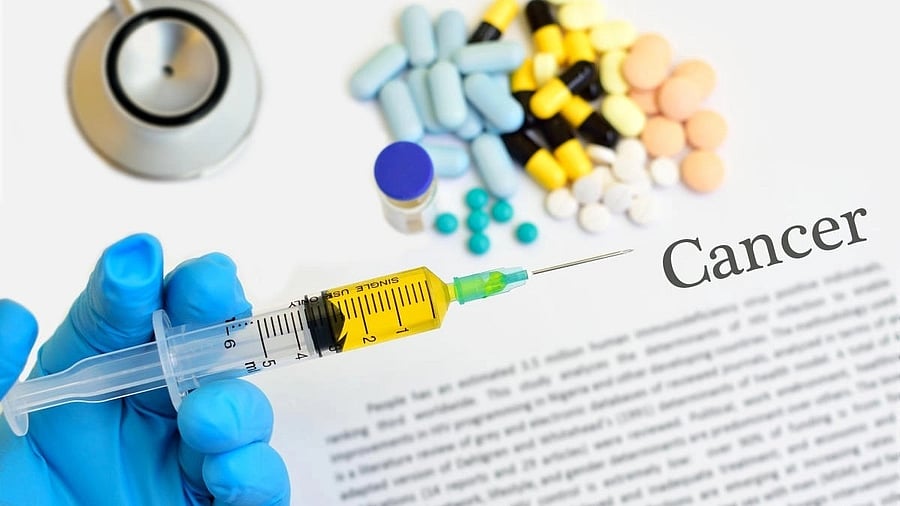
Syringe with drugs for cancer treatment.
Credit: Getty Images
Mumbai: In a landmark achievement for cancer care in India, the Advanced Centre for Treatment, Research and Education in Cancer (ACTREC), at the Tata Memorial Centre (TMC), in Mumbai, has successfully administered the country’s first high-dose 131I-mIBG therapy to a 17-year-old male patient with relapsed neuroblastoma, a type of cancer that mostly affects young children.
The procedure was conducted on May 5, 2025, and was followed by autologous hematopoietic stem cell infusion on May 29, 2025.
“The patient is currently doing well,” stated Dr. Sudeep Gupta, Director, TMC, in a statement issued by the Tata Memorial Centre.
High-dose 131I-mIBG therapy is a critical treatment option for high-risk neuroblastoma, a common solid tumors in children, especially when conventional therapies fail.
While the standard permissible dose in India is 5 mCi/kg (maximum 300 mCi), ACTREC administered a supra-high dose of 800 mCi, a first in the country, made possible through special approval from the Atomic Energy Regulatory Board (AERB).
Neuroblastoma treatment requires a multi-modality approach including chemotherapy, surgery, radiotherapy, stem cell transplant, and immunotherapy. However, due to the high costs of certain treatments like anti-GD2 immunotherapy, radioisotope-based therapies such as high-dose MIBG are being explored as effective alternatives to improve patient outcomes in India.
Dr Gupta also appreciated the dedicated team of doctors, physicists, technical staff, nurses, and auxiliary personnel from ACTREC and TMH for their exemplary coordination and collaboration in successfully delivering this complex treatment. He acknowledged that such achievements are possible only through seamless teamwork and strong leadership, and thanked Director ACTREC, Dr. Pankaj Chaturvedi, and Director TMH, Dr. C. S. Pramesh, for guiding their respective units towards this national milestone.
Administering such a high dose required meticulous planning to ensure radiation safety, patient monitoring, and seamless coordination among multiple departments. Detailed simulation experiments were conducted by physicists and RSOs to calculate expected exposure levels. Additional monitoring systems and shielding protocols were set up to minimize personnel exposure, adhering to the ALARA (As Low As Reasonably Achievable) principle.
The Department of Nuclear Medicine in collaboration with Paediatric Oncology, Haematological Oncology (Bone Marrow Transplant Unit), and Transfusion Medicine departments led the therapy. Guidance was sought from international experts at Memorial Sloan Kettering Cancer Centre, New York, to refine the treatment protocol.
The procedure involved fractionated dispensing of the radioactive dose by physicists and administration by two nuclear medicine physicians to reduce exposure. The patient was managed in ACTREC’s specially designed “hot bed” isolation ward equipped to handle high-dose radionuclide therapies safely.
After infusion, the patient’s blood counts dropped as expected, necessitating an autologous stem cell transplant, which was successfully carried out on day 24 post-therapy. His blood counts have since recovered, and he is stable.